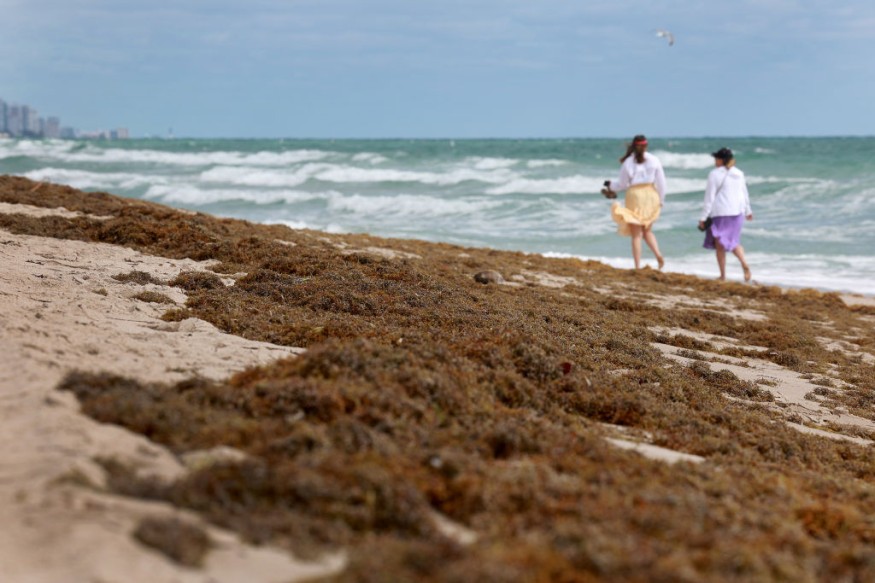
Many creative solutions, such as turning sargassum seaweed into fertilizers and vegan leather, have been put forth as this year's sargassum seaweed in Florida's coastlines is at its greatest mass.
Sargassum Seaweed in Florida
The amount of sargassum seaweed that washes ashore on Florida beaches has decreased to levels usually seen in the summer, and in some places, even below normal, according to August 2023 reports.
The 5,000-mile-wide bog that was previously anticipated in the Atlantic and Caribbean has strangely and quickly vanished.
Sargassum seaweed washing ashore is only detected in low (or below) quantities on the recent statewide forecasts.
Although the occurrence of sargassum seaweed is not new, this year's mass set a new record as the largest so far. The seaweed season in Florida normally lasts from April until October, with June and July being its peak months. Depending on the wind and currents, the seaweed arrives in waves.
Sargassum by itself is not toxic to people, but when it decomposes on beaches, hydrogen sulfide is released, which can be dangerous to those who have breathing problems. However, even decomposing sargassum isn't thought to be dangerous because the gases diffuse quickly on windy beaches.
While pathogens have not been found in sargassum found ashore, beachgoers are being advised to stay away from seaweed clusters in light of a recent study that reveals the bacterium Vibrio adheres to microplastics that combine into sargassum clusters at sea.
One of the over 100 species of Vibrio, sometimes known as flesh-eating bacteria, Vibrio vulnificus, can result in potentially fatal food-borne illnesses from consuming seafood as well as illness and, in some cases, death from infections of open wounds.
Turning Nuisance Into Asset
A problematic seaweed that accumulates on Florida beaches is being transformed into useful biologically produced materials by the inventive startup Carbonwave. The business, which has offices in the US, Puerto Rico, and Mexico, produces goods with applications across numerous industries.
The Caribbean and Atlantic regions have been seeing spectacular sargassum blooms over the past 12 years. Wildlife in the open ocean can find food and a home among the sargassum plants. It grows uncontrollably during blooms, forming enormous floating mats in oceans that drift to shore and block beaches, causing unpleasant or even hazardous circumstances for tourists. It contains sea life that may react with human skin and when it decomposes, it smells like rotten eggs.
In March of that year, approximately 9 million tons of sargassum appeared in the area, establishing a record-breaking bloom, a total of 13 million tons.
Carbonwave, a startup, aims to transform this problem into a strength. The business will process the seaweed into a variety of products, such as fertilizers, emulsifiers for cosmetics, and even a vegan leather substitute.
The company had planned to farm seaweed, but since there was so much of it accumulating on beaches and needing to be removed, it decided to change its direction. Instead, Carbonwave has agreements in place with several Florida resorts to handle the seaweed, and the business is also looking to work with regional governments.
Also Read : Flesh-Eating Bacteria Vibrio Latches On to Microplastics, Causes Leaky Gut Syndrome in Marine Life
Making Fertilizers and Vegan Leather Out of Seaweed
The business gets paid for removing the sargassum and then gets paid again for the products it makes from the seaweed, which is a clever business strategy for Carbonwave.
The company aims to maximize the seaweed's inherent capacity to remove dangerous carbon pollution from the environment during the process. Beachgoers enjoy a better experience, manufacturers benefit from plant-based agricultural inputs, and there are eco-friendly substitutes for both oil-based emulsifiers and plastic-based faux leather leathers.
The company's quick thinking has helped it attract several investors and acquire finance totaling roughly $13 million, with another $2 million most likely on the way.
© 2025 NatureWorldNews.com All rights reserved. Do not reproduce without permission.





